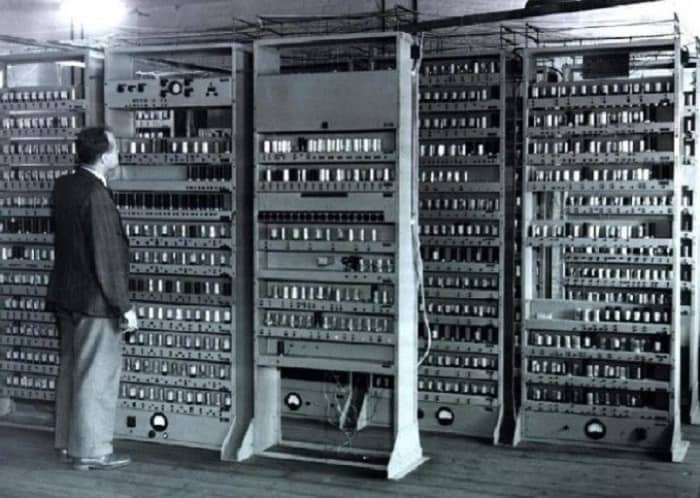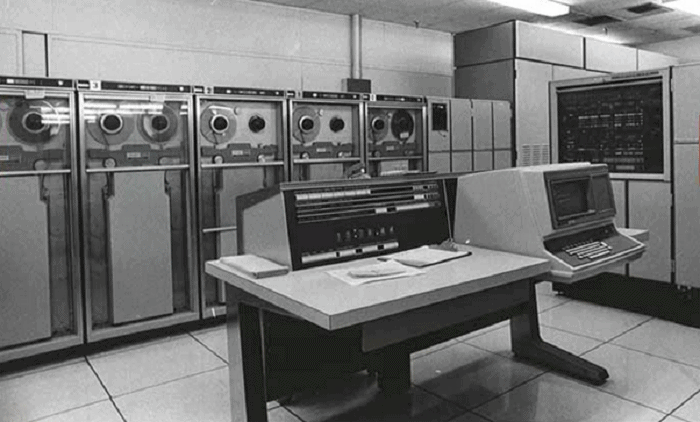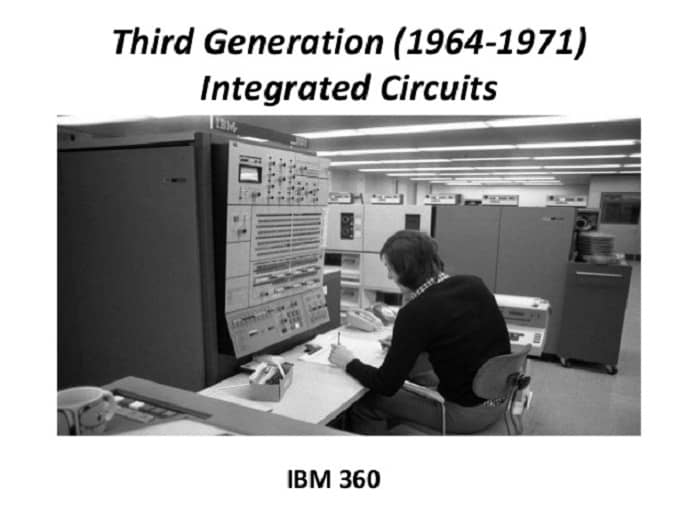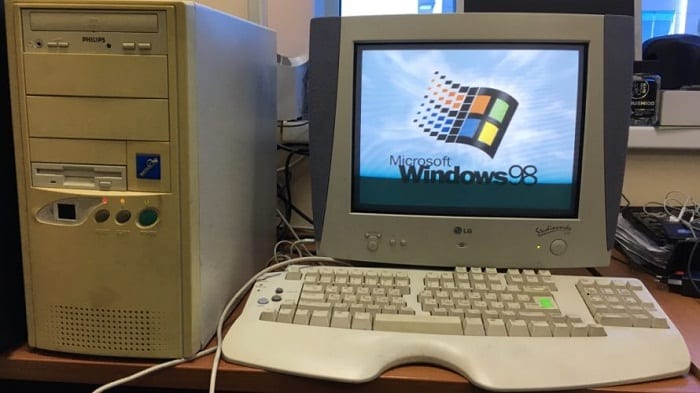In this rapidly changing and growing world, computers have become an advanced and important part of everyone’s life. Each Generation of computers drastically impacts fundamentally in the way computers operate, more powerful, more efficient, and technology.
Each generation of computers always comes with different and advanced features.
Five Generation of Computers
Initially, the generation of computers was the only change in software development. But in the modern era, the generation of computers means changes in both software and hardware.
First Generation Of Computer (1946-1959).
The first generation of computer vacuum tube was invented in (1946-1959).
Due to the use of a vacuum tube, it was very heavy in size, took up a lot of space, and filled the entire room. This used to consume a lot of electricity, and a lot of heat was also generated. The first generation of computers used vacuum tubes as circuitry and magnetic drums for memory. These computers had the capacity to store less information. There was another disadvantage of these computers: large cooling systems required. It was very expensive to operate. As a result, the use of such inefficient materials, there were often breakdowns.

The first generation of computers used to work on machine language (which is the most basic and lowest-level programming language that a computer can easily understand) and performs its operations. These computers had the ability to solve only one problem at a time. The input was supported by punched cards and paper tape. Output was displayed on print-outs.
It consists of 20,000 vacuum tubes, as well as 70,000 resistors and 10,000 capacitors. It weighed about 30 tons. And not continuous maintenance required
Also, read:- What is a computer full form?
Few Example Of First Generation Of Computer
- ENIAC
- EDVAC
- UNIVAC
- IBM-701
- IBM-650
Second Generation Of Computer (1956 – 1963)
The second generation of computers was invented in 1947, Transistor instead of the vacuum tube. But until 1956, it was seen in very few computers. These generations of computers were immensely utilized from 1956 to 1963.
Transistor was smaller than the vacuum tube, so it was also helpful in making the computer smaller in size; over time, the transistor was a huge improvement from the vacuum tube; it was more powerful, more reliable, faster in speed, cheaper to build this computer as well as less consuming the electricity as compared to the first generation of computer.

Even then, it was damaging the computer due to its excessive heat generation. However, it was seen to be significantly more effective than the first generation of computers. But still, Input supported punched cards and paper tape. Output was displayed on print-outs. These were also the first computers to store their memory instructions, converted from Magnetic Drum to Magnetic Core Technology. And was also the first computer designed for the atomic energy industry. This made it easier for programmers to create instructions in words.
Few Example Of Second Generation Of Computer
- Honeywell 400
- IBM 7094
- CDC 1604
- CDC 3600
- UNIVAC 1108
Third Generation Of Computer (1964-1971)
The third generation of computers (1964-1971) integrated circuit. This was the first generation where the application of IC (integrated circuit) in computers. These computers used silicon chips to replace transistors by reducing them. It is also called a semiconductor.
This massively increased the speed and performance and improved the computers’ efficiency, big storage capacity. But IC chips are difficult to maintain. The users were first interacting with computers in the third generation of the computer instead of punch cards and print-out through the keyboard, monitor, and interface with an operating system.

The surprising thing is, it enabled the computers to run many applications at once, from the central program that monitored the memory. The first time these computers reached mass audiences due to their size being smaller and cheaper than others. Eventually, over 45 years later, still, these computers are using.
Few Example Of Third Generation Of Computers
- PDP-8
- PDP-11
- ICL 2900
- IBM 360
- IBM 370
Fourth Generation Of Computer
The fourth generation of computers microprocessor was presented in 1971. In that century, it came as a revolution with their advanced technology and features. You can also know the microprocessor as CPU (central processing unit where thousands of integrated circuits could fit into a single silicon chip. With the help of this, now it could easily put the computer on a desk.

Graphics User Interface (GUI) technology was developed to offer more comfort and attract users. Size also reduced significantly, less heat generation, less maintenance required, fastest in consumption than the previous generation of computer. All kinds of languages could be used on this computer.
The Intel 4001 chip was developed in 1971, all the components of the computers (central processing unit and memory to input/output control) were put into a single chip. In 1981, IBM designed a computer that was the first computer, especially for home users. And 1984 saw the Macintosh introduced by Apple.
Microprocessors also greatly increased the number of products beyond the scope of computers and in increasing numbers. The increasing power of these small computers means that they can be networked, due to which eventually, the Internet developed greatly.
Few Example Of Fourth Generation Of Computer
- IBM 4341
- DEC 10
- STAR 1000
- PUP 11
Fifth Generation Of Computer
Artificial technology brought the Fifth Generation of Computers in 2010. This is the start of such a novel and powerful technology, which may be utilized by many other potential applications worldwide. Some applications, like voice recognition, are also being employed in today’s desktops, laptops, and smartphones like Android. Using it, multiprocessing and superconductors are helping AI (artificial intelligence) to appear actually.

But there’s still a lot of space left for improvement. Artificial Intelligent developers are still engaged in the development of computers to offer a replacement direction to the present century.
Quantum computing and molecular and nanotechnology will fundamentally change the face of Computers within the coming years. The focus of fifth-generation computing is to develop devices that can react to natural language input and the ability of learning and self-organization.
Few examples of the fifth generation of computers
- Laptop
- NoteBook
- UltraBook
- Chromebook
Click Here To Download Computer Generation Pdf
Conclusion
Conclusions include all the significant parts mentioned in the text before the conclusion.
- As already mentioned, the generation of computers remains up to five main generations.
- Various improvements are wiped out depth within the development of computers, which have used computers altogether aspects of life. It’s a really useful device that will still experience new developments over time.
- Computers are getting used in various areas of our lives. Education, entertainment, sports, advertising, medicine, science and engineering, government, office and residential computers are a number of the appliance areas.
- From time to time, the generation was developed consistent with the requirements and work of humans. First moving from tube to transistor, then from microcircuit to the microprocessor and eventually to AI.
Frequently Ask Questions
- What’s the computer generation?
Ans:- Generation defines the state of improvement in development. The term is additionally often utilized in the various advancements of technology. With each new generation, the circuitry became smaller and more advanced as compared to the previous generation. As a result of the computer’s working capacity, speed, power, and memory have increased proportionately. New discoveries are still constantly in processing that affects our way of living, working, playing, and even important life aspects.
- History of computers and their generation?
Ans:- the pc was invented within the 19th century by Charles Babbage, an English mathematics professor. He designed the analytical engine, and it had been the planning on which the essential structure of today’s computers is predicated, which was called the Atanasoff-Berry Computer (ABC).
There are mainly five types of generation:-
- Vacuum tube
- Transistors
- Integrated circuit
- Microprocessor
- Artificial intelligent
- what’s the 6th generation of computers?
Ans:- Today, Intel Corporation introduced the 6th Generation Intel® Core ™ processor family, the company’s best processor ever. Launch provides an important way in people’s relationships with computers … There are nearly 500 million computers in use today, about four to 5 years old or more.
- Does ULSI stand for?
Ans:- It stands for Ultra Large Scale Integration. It is used in of the fifth generation computers.
- The generation supported VLSI microprocessor?
Ans:- The 4th gen was VLSI microprocessor-based. the amount of the fourth generation: 1972-1990